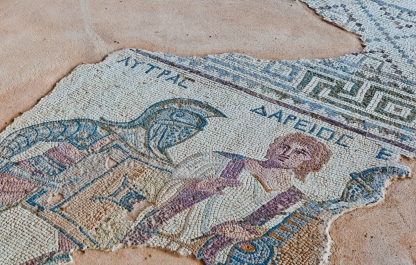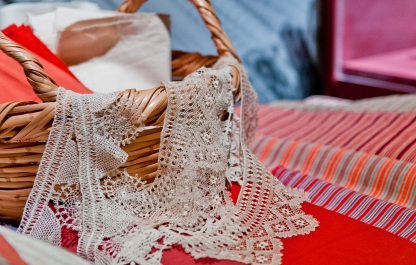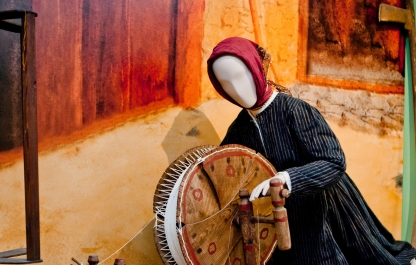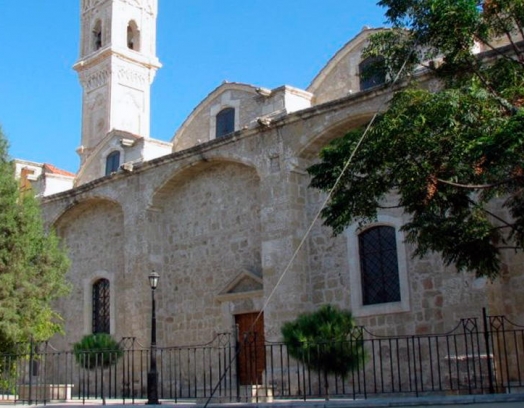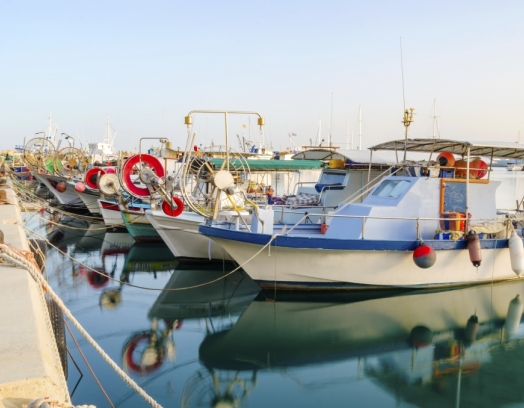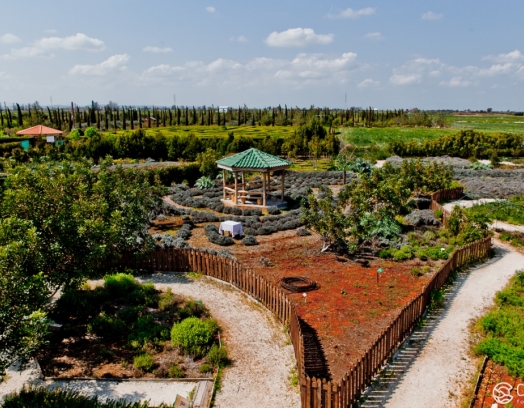Cyprus is one of those countries where the art of lacemaking has reached the highest level. Incorporating Greek, Byzantine and Italian traditions, Cypriot lace making has at the same time been able to retain its own unique character.
Lacework connoisseurs consider white lace, which experienced significant foreign influence under the Venetian rule, to be the most valuable type of handmade lace. Recently, crochet has also become a popular craft, in part thanks to art projects that aim to bring together different craftswomen from across the island.
Since antiquity lacemakers and crocheters have been skillfully creating various kinds of patterns and decorative objects. So, for example, the Cypriot «pipilla» is a form of narrow-knot lacing, which requires the utmost level of skill from its maker. Similar to the Italian «reticello» (15th century) it has been around for many centuries. A floral pattern accompanied by various geometric shapes (e.g. triangles, circles and waves) is a popular motif in this type of lace. A thin, high-quality cotton thread has replaced a hand-spun silk thread that was used in the beginning.

This lace is made using a simple needle and a very smooth, tautly spun thread of white or beige color. Traditionally pipilla is considered to be of Byzantine origin. The technique used to make pipilla lace as well as its patterns are very similar to the practice of lacemaking that was popular in Constantinople, Rodos and northwestern parts of the Aegean Sea (Chios, Psara, Samos and others). Similar types of lace were also produced in Turkey (e.g. the coastal regions of Asia Minor, Smirna). Other important centers of lacemaking used to be located in Nicosia, Larnaca, Paphos and Famagusta.
When making pipilla lace (as well as most types of lace, except for those with a striped pattern), one needs to start the process from the center. If the pattern is not raised (three-dimensional) then the finished work will look the same from both sides.
The technology used to make pipilla lace has survived thanks to the women who live in the villages of Koilani and Omodos and those, who come from the village of Lapitos (the village has been part of the occupied territory of the island since 1974).
Originally, pipilla lace used to be most often associated with bed covers as well as sheets. Meanwhile, contemporary lacemakers either use this technique to decorate the edges of curtains, tablecloths, pillow cases, etc., or make standalone decorative pieces such as necklaces, pendants, earrings or handkerchiefs, scarves and even wall hangings.
Today just like ages ago, Cypriots used lacework to decorate their homes. Embroidery, as a form of folk art, has also experienced changes and development over the course of many centuries. Cypriot embroidery has been enriched by Greek, Byzantine and Italian traditions, while at the same time retaining its own unique character. Contemporary embroiderers follow centuries-old traditions, but also continue to incorporate new elements and influences.
Whitework embroidery («levko kentima») emerged in Cyprus during antiquity. The pattern was based on a diamond and was created in a zig-zag manner. A row of semi-diamonds was referred to as a «river» and was made using different stitches. A finished work consisting entirely of these semi-diamonds was called an «arch».
White embroidery («lefkaritika») was practiced everywhere on the island. However, the most sophisticated design and patterns were introduced in Lefkara. This village, like many other villages situated south of Nicosia (Kato Dris, Vavla, etc), was known for satin stitch embroidery. Lefkaritika is a type of craft that is usually referred to as embroidery, even though it combines both elements from lacemaking and embroidery.

There is a wide-spread idea that lefkaritika has Venetian origins. This idea is based on the notion that lefkaritika uses openwork elements that are different from those that appear in earlier local embroidery and that instead carry a deep resemblance to medieval Italian embroidery.
However, local researchers disagree with this supposition, arguing that lefkaritika emerged in Cyprus in the 12th century. It experienced heavy changes brought on by the Venetians in the 16th century, who sought to teach local craftswomen the techniques used in their homeland. And so local craftswomen began to incorporate Italian traditions and patterns into their work. This is why the signature look of authentic lefkara lace features a marriage between traditional folk motifs of the island and the famous geometric design introduced by Venetian aristocrats.
The most popular motif used in lefkaritika is called «potamos» or «rivers», which is known for it symmetry and clean-cut lines (also important in other patterns like «forget me not», «Margarita» and «Leonardo da Vinci»).
Anyone who visits Lefkara is bound to learn that Leonardo da Vinci visited this village in 1481 and purchased lace Antimins, which he later donated to a cathedral in Milan. But in addition to this, it is alleged that the prototype for the tablecloth that appears in the Last Supper was a Lefkara lace tablecloth.
In the past, the color of the thread was either white or dark olive. Nowadays, beige is also used to make Lefkara lace. Because unbleached linen gradually becomes lighter with washing, while the color of the lace stays the same, there is an interesting visual effect that surfaces with time.
Therefore, even today lefkaritika is dominated by clear cut geometric lines, despite the presence of new motifs (e.g. butterflies, stylized flowers, etc.). The first Lefkara Lace was made from cotton or silk fabric. With time linen also came into use. Contemporary lefkaritika is made using imported (French or Irish) linen. The thread comes from France or Ireland (the most popular kinds are the «French thread» or the «pearl cotton»).
Did you know that in 2009 the art of lefkaritika was recognized by UNESCO as intangible heritage.
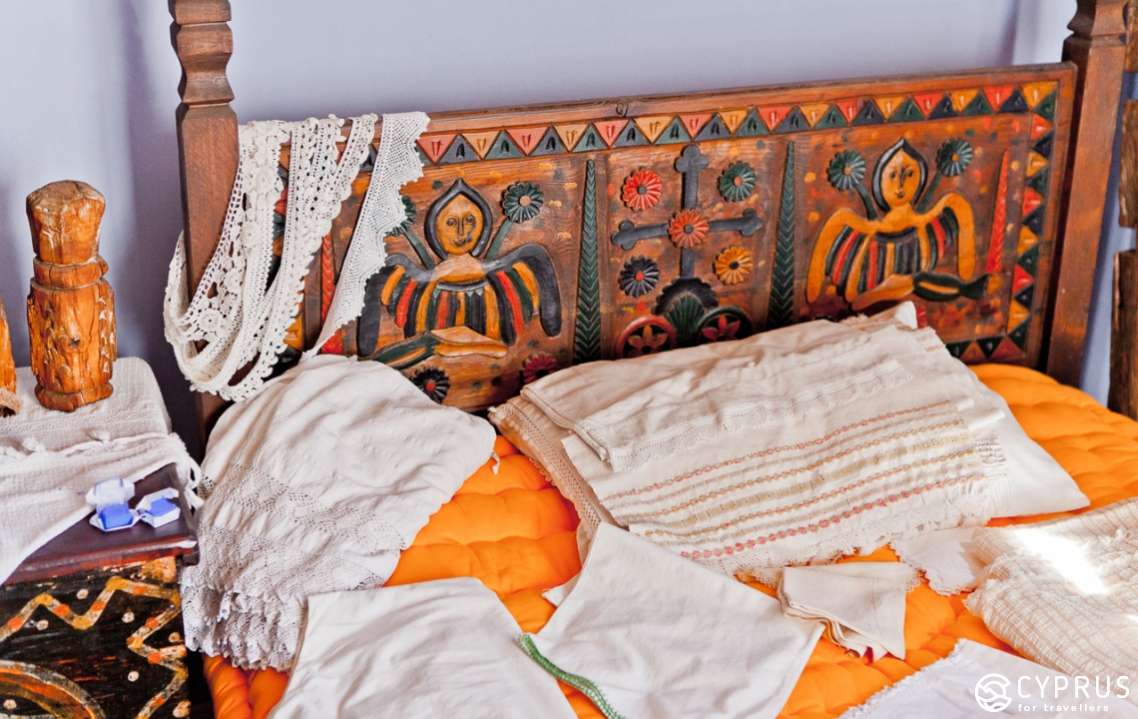
Starting from mid-19th century lefkaritika began to be exported to Egypt and Asia Minor, then to Europe, America and Australia. Lefkarians were the first to export their lace and were followed by Kato Dris, Kofinou, Vavla and other nearby villages.
Being a trailblazer is always hard, especially when it comes to finding your first client, who has to be well-to-do, since handmade lace is quite an expensive good.
Many of the first commivoyagers and merchants who set out to trade abroad were of very young age, usually around 15-16 years old, having finished only 4th or 5th grade. Even though it was illegal, local officials and even clerics would oftentimes help to falsify documents and add the missing years, so these youngsters could do their business.
Pretty quickly business began to flourish, which allowed the merchants to not only build great homes for their families, but to also finance the construction of village schools (mostly for boys). They also helped to build churches (e.g. Agios Georgios in Kato Dris, 1957), hospitals and other public facilities.
Residents of Kato Dris still like to recount a curious incident, which happened to one of the villagers, named Argiros Stakis (1913-2001). Having arrived in London as a young person, Stakis knew little about this city or country. He immediately headed to the royal palace thinking that it was the residence of very wealthy people. Surprisingly, he was invited inside and asked to show his lacework. One of the noblewomen there ended up buying lefkara lace for the Queen herself. The lucky merchant received a check for a large sum of money, which is how he finally realized who his client was. He never cashed the check, instead keeping it as a memory. But it was nevertheless eventually lost.
Lacework has been a traditional form of decoration during weddings and other celebrations in Cyprus. Works by craftswomen from Nicosia, Larnaca, Lapitosa and Kailani have always been of particular value.
Families would prepare a dowry for the bride by putting together as much lacework as they could find. All this was used to decorate the room of the bride and stayed there for about 8-10 days, so all of the neighbors and guests could come and admire the beauty of the lacework that adorned the walls of the room. This is why this type of lacework is usually called «wall-fabric» or «knee-fabric» (because they were placed on top of the bride and groom’s knees during the celebration). Tablecloths, pillowcases, sheets were also used to cover the walls.
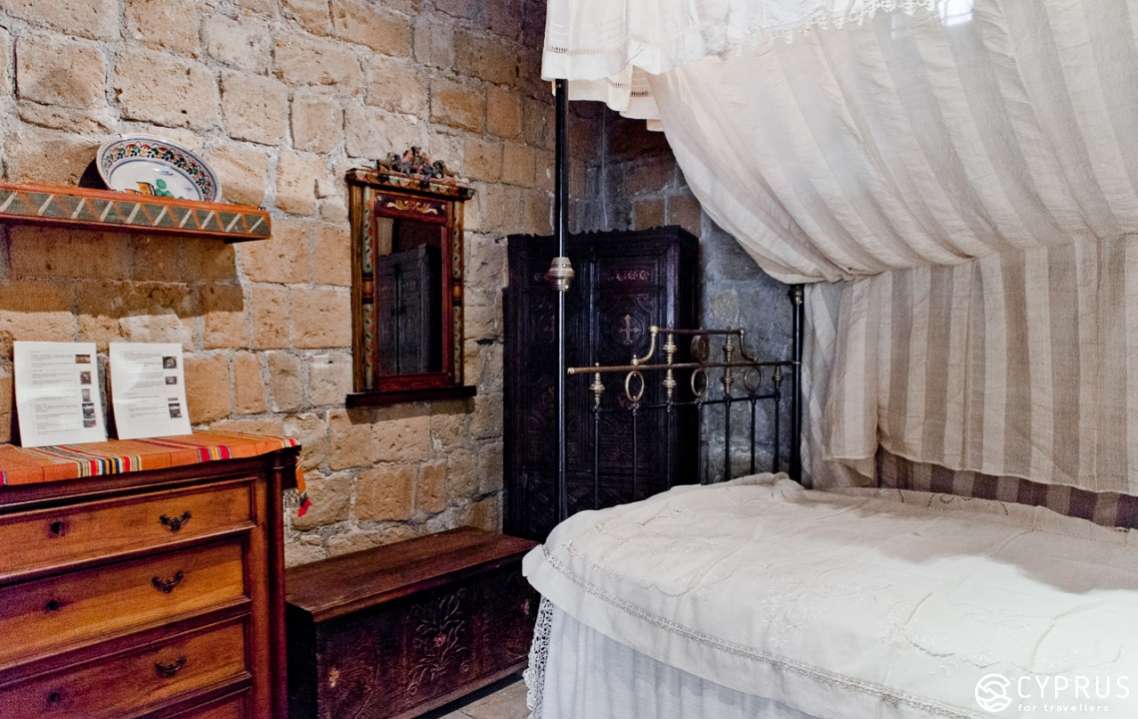
Embroidered fabrics have a long history of use in Cyprus. Researchers say that some of their decorative elements were borrowed from the geometric patterns found on the vases from the 10th-9th centuries BC.
As we said before, «white lace» («levko kentima») has always been considered the most refined type of lacework.
Other popular designs used to decorate handmade embroidery and lacework were groups of geometric patterns traditionally located at the seam of a towel, tablecloth and sheets. One such pattern includes vertical, geometric «anthropomorphic» motifs that were used to adorn the upper part of the fabric. This geometric pattern, which is typical of all traditional Cypriot embroidery, is made using a special kind of stitches.
In addition to white lace embroidery, there were also wonderful examples of colored embroidery. Some of the earliest examples were made using a red thread (which was dyed using the pigment of a madder plant) and a blue thread (which was obtained using the pigment of an indigofera plant that grows in India).
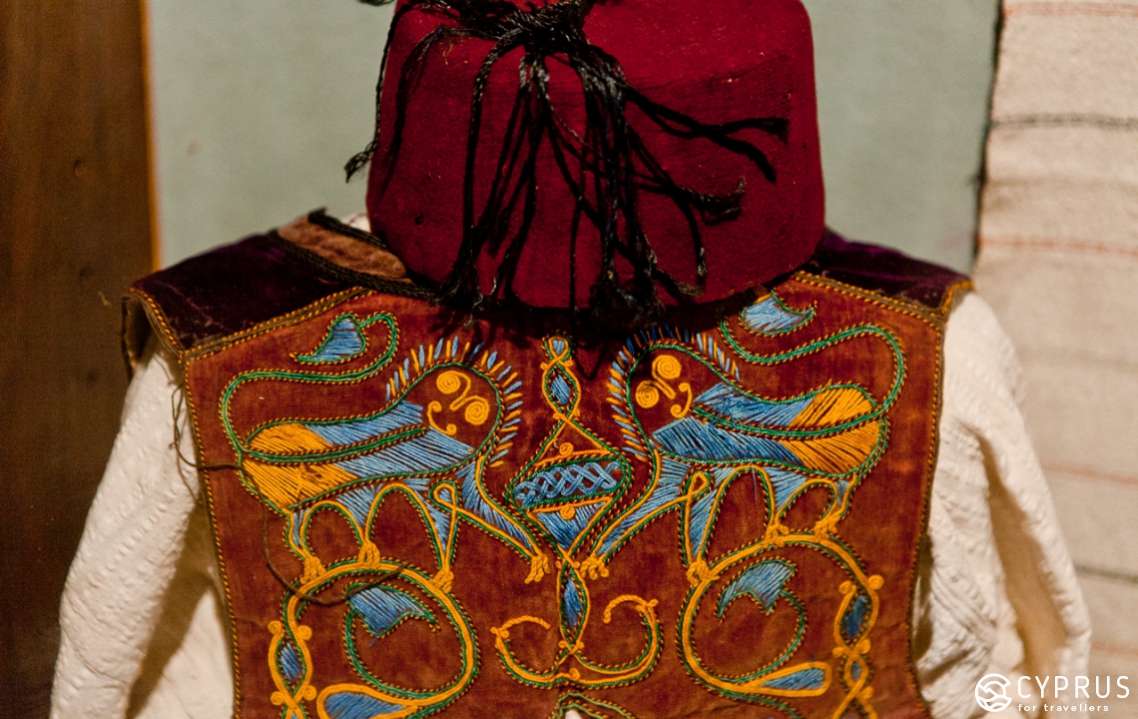
Later on green, yellow and orange were added to the color palette.
The cross stitch continues to be a popular pattern in embroidery both in Cyprus and in many other countries. It can be found on towels, tablecloths, bed sheets and comes from the mountain villages of the Paphos region.
Early examples of cross stitch embroidery were made using rough cotton fabric and feature different colors.
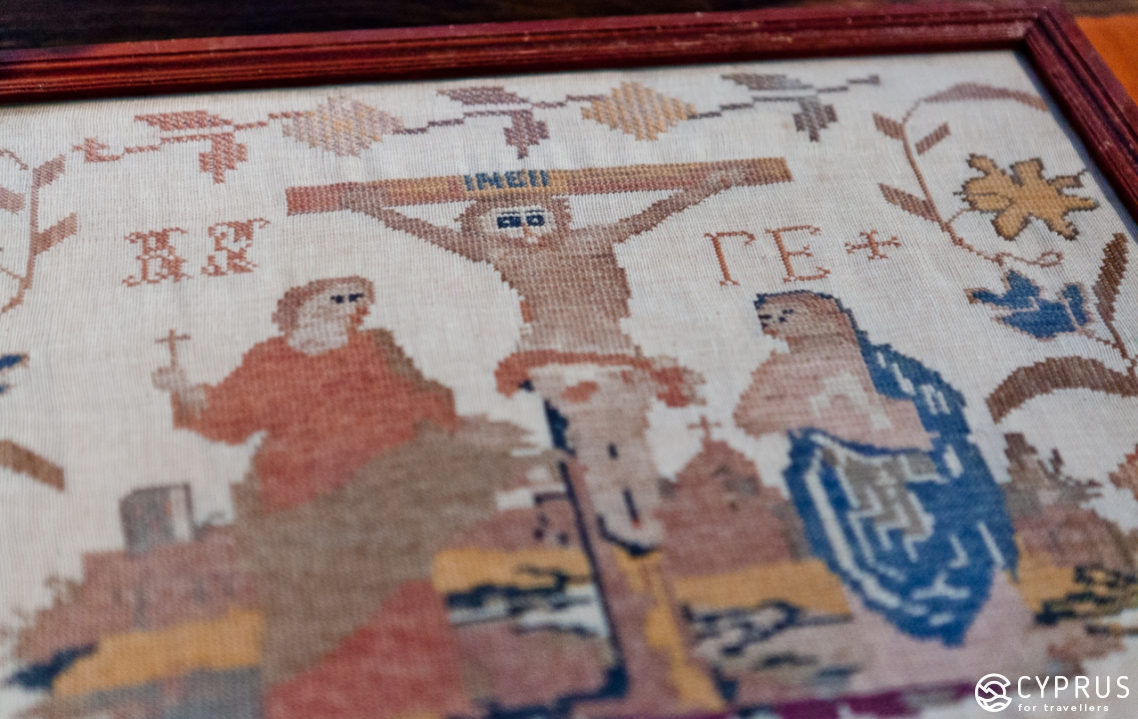
Another popular type of stitch is a backstitch. Sometimes contemporary works include images borrowed from magazines, such as butterflies, flower baskets, etc. This happens because clients tend to like such decorative elements.
The most refined examples of polychromatic handmade embroidery are usually found in towels and women’s belts (the earliest examples of which were made using cotton, linen and mixed fabrics) that were embroidered using a cotton or silk thread.
Until the end of the 19th century the Karpass Peninsula was known for its beaded embroidery. Beaded works were usually made using thick cotton fabrics (usually as bed sheets, tablecloths, napkins and women’s outerwear). White embroidery combined with glass beads was popular in this region until the 19th century. Complex patterns with geometric motifs was created using various types of weaving and beads of different colors (green, red, black etc).
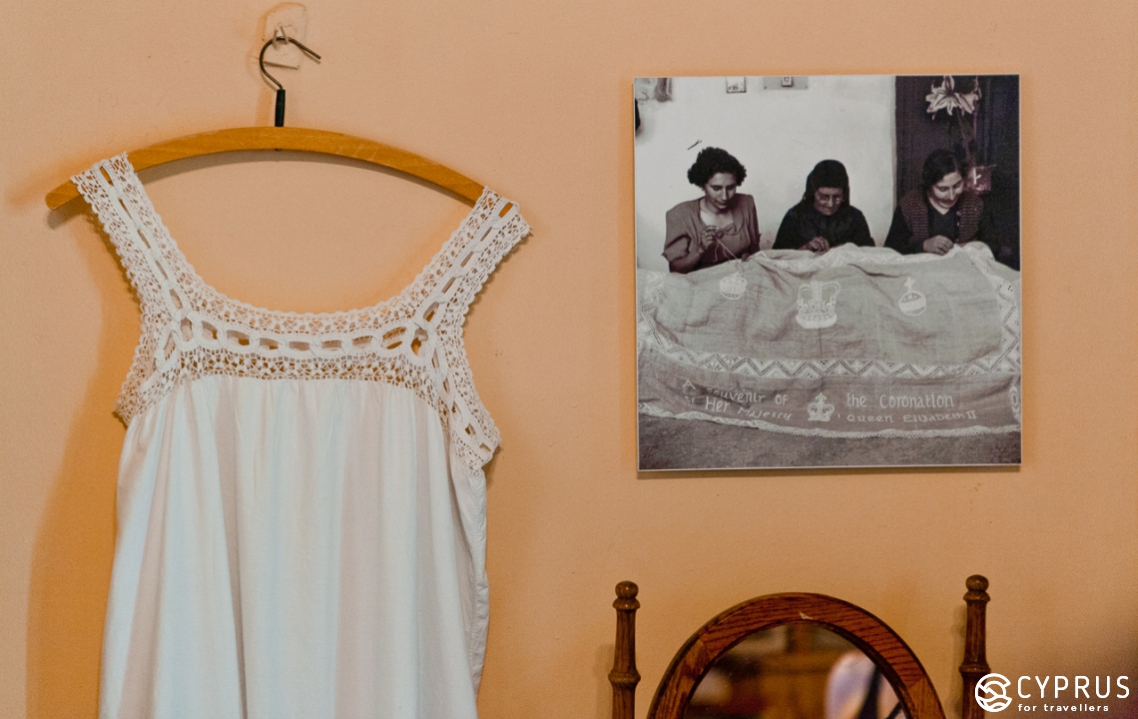
Crochet (translated from French means «hook») is usually used to refer to an Irish embroidery that was introduced in the 16th century by female monks. Its unique characteristic are images of leaves, flowers and insects that are separately crocheted with a hook and then weaved into the larger work.
Crocheting has been a popular form of craft in Cyprus. You can find numerous examples of this craft. Many of the linen works created by local craftswomen are decorated using the crochet technique.
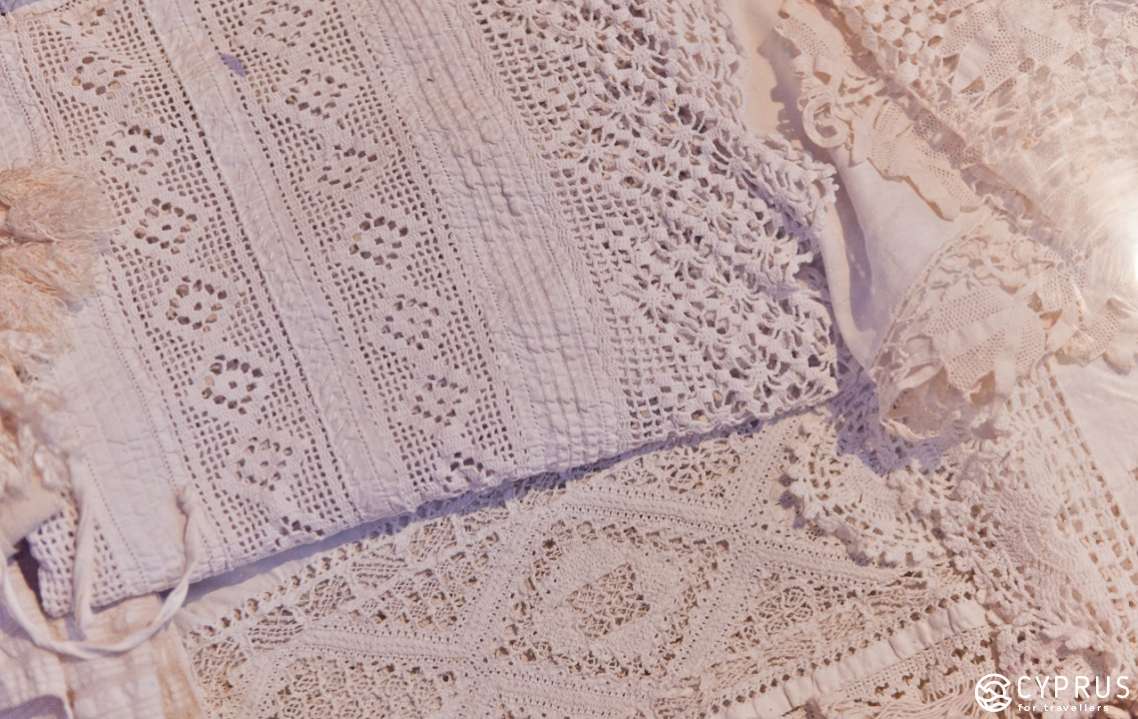
This craft has recently been imbued with a new social meaning thanks to «Peace2Peace» — a project created by three Cypriot women: two Greeks (Christiana Mouzouri and Eleni Daniel) and one Turkish (Nilgun Akin). You can visit the project’s Facebook page here.
Women from all over Cyprus are invited to create separate fragments of embroidered work that are then incorporated into a larger open air installation. The first object created as part of this project was a large anchor that can be found at the embankment in the Old Town quarter of Paphos (the unveiling took place on July 29th, 2016). The next object was the famous tree located next to the municipal gallery.
The project has approximately 30 different participants and the number continues to grow.
Events dedicated to promoting friendship and cooperation between different Cypriots through creative projects and social activities are popular on the island.

So where can one purchase embroidery, traditional lacework and other types of folk crafts? Such items are available at all of the island’s souvenir shops.
However, we have selected a few shops, where you can also learn about the origins of each item, how to take care of it or where to find a person, who can create a custom-made object or give you lessons.
Cyprus Handicraft Center (Nicosia)
The center includes boutiques and art studios that specialize in the sale of folk art and crafts, such as ceramics, pottery, baskets, metal and wooden objects, embroidery and lacework, mosaics and folk costumes.
Address: 186 Athalassas Avenue, Nicosia
Telephone: +357 22305024
Leventis Municipal Museum Souvenir Shop
The museum offers organized, guided tours, programs and events. Entrance is free, but donations are welcome. The souvenir shop sells works by contemporary artists and craftsmen as well as literature on the subject.
Address: 17 Ippokratous, Laiki Geitonia, Nicosia
Telephone: +357 22661475, Fax +357 22662285
Website: www.leventismuseum.org.cy
The souvenir shop at the Cyprus Folk Art Museum
The museum is located inside what used to be the archbishop’s palace. It houses a collection of ethnographic artefacts: examples of Cypriot ceramics, embroidery, lacework, naive art, agricultural, textile machines and many other objects. The museum has a public library (books on Cyprus history, manuscripts and science magazines) and its employees are available to give you a tour of the permanent and temporary exhibitions and answer any questions that you might have about folk crafts and their history.
Address: 2 Square of Archbishop Kyprianos, Nicosia
Telephone: +357 22432578, Fax: +357 22343439
Website: www.cypriotstudies.org
Chrysaliniotissa Crafts Centre (Nicosia)
This center for traditional crafts is comprised of 8 studios and is located near Panagia Chrysaliniotissa Church — the oldest Byzantine church in the Old Town. The center is part of the program geared at restoring and reviving the center of the capital.
Address: 2 Dimonaktos (intersection of Ipponaktos and Dimonaktos streets).
Telephone: +357 22348050, +357 99629611
The Place (Old Paphos)
The Place invites local artists to use the space as their studio, creating and exhibiting their art and talent. The project specializes in pottery, textiles, embroidery, iconography, mosaics, basket-weaving, wood-carving and encaustic painting.
Address: 56 Constantinou Canari, Paphos
Telephone: +357 26101955
Email: theplace@theplacecyprus.com
Website: www.theplacecyprus.com
The Crafts Center, Lefkara (located at the corner of Afinnon, Kosti Palama and Pano Lefkara streets)
Two traditional rural homes are connected via an inner courtyard. Inside are craftswomen creating embroidery and lacework as well as a silversmith. There is a small museum. You can also take a class and try out one of the local crafts.
Every year Lefkara holds an exhibition of works created by the local craftswomen (takes place at the end of the summer). The event also helps to promote traditional crafts among tourists and young people.
The souvenir shop at the Farmer’s House Museum is located at the Ayia Napa central square (next to the monaster).
Website: www.ayianapa.org.cy
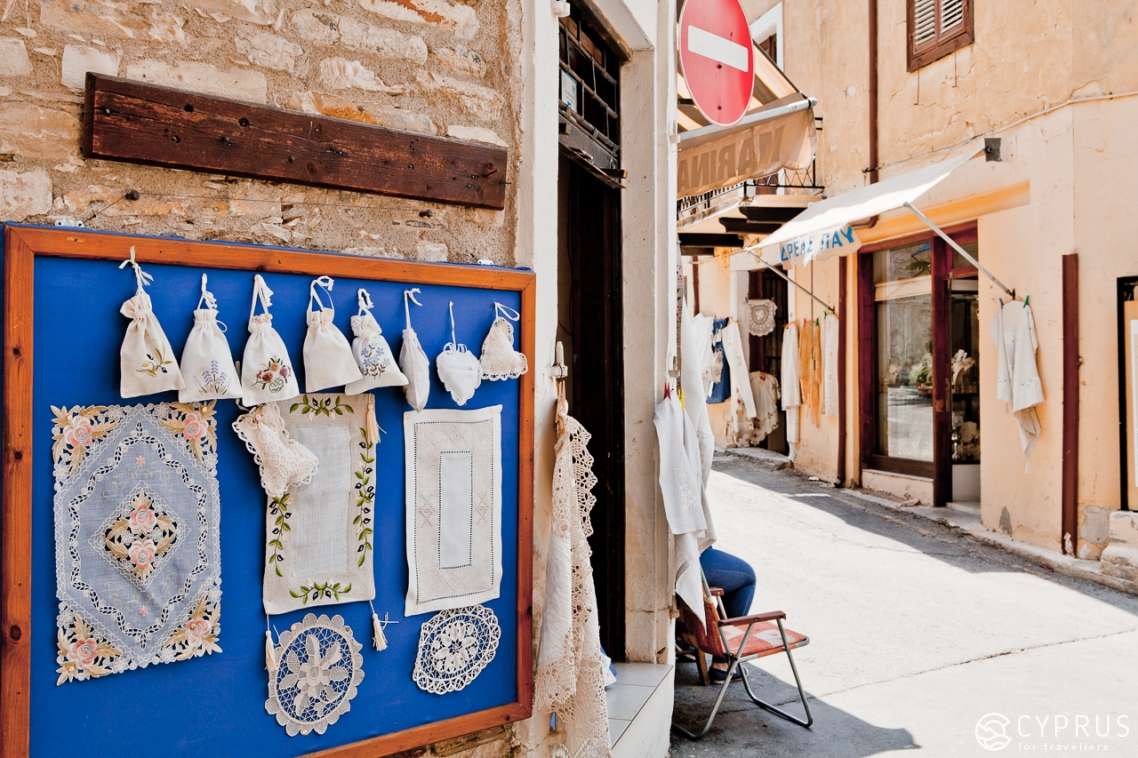
See you soon!



